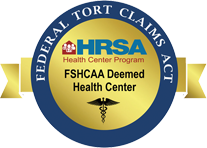
More than fifty million people in the United States have an allergic reaction each year. You are more likely to have allergies and a reaction if your parents had them. An allergic reaction is the way your body responds to an allergen. The most common allergies are to certain foods, inhalants, medications, latex, and insect bites or stings.
Food allergies affect children and adults. The most common food allergies in adults are milk, eggs, wheat, soy, peanuts, tree nuts, and shellfish. For kids, it’s milk, eggs, wheat, soy, peanuts, tree nuts, and inhalants. Sometimes kids can grow out of allergies.
An allergic reaction to foods can occur within minutes of eating that food and be severe. Symptoms could include itching over the whole body or a certain part of the body, nausea and vomiting, hives, and swelling around the mouth, throat, tongue, or face. Treatment includes allergy testing to identify what foods you are allergic to, avoiding those foods, taking an antihistamine, and carrying an epi pen if needed.
Inhalant allergies are airborne substances that are inhaled. They might affect someone year-round or be seasonal. Common year-round allergies include pets, dust mites, cockroaches, and molds. Seasonal allergies are typically pollen from trees, grass, or weeds. Tree pollen generally appears in the spring and weed pollen in the fall. Symptoms can be mild, severe, or anywhere in between and include runny nose, stuffy nose, itchy nose, sneezing, itchy eyes, and watery eyes. Avoidance of these allergens is the best way to prevent symptoms but that is almost impossible in today’s world. Other interventions include getting a proper diagnosis, taking a daily antihistamines and/or nasal spray, or immunotherapy (allergy) shots.
Any herbal, over the counter, or prescription drug can cause an allergic reaction. Common medications that cause allergies include nonsteroidal anti-inflammatory drugs, antibiotics, insulin, and chemotherapy. Symptoms of a medication allergy include hives, rash, itching, shortness of breath, and swelling. Treatment includes avoiding the medications, making sure your family and healthcare providers are aware, and carrying an epi pen if needed.
Latex allergies occur after repeated contact with natural rubber latex. Those who work in healthcare or who have chronic medical conditions that require frequent hospitalizations are at most risk of developing a latex allergy. The most common reaction is skin irritation, but other symptoms include hives, runny or itchy nose, and difficulty breathing can occur. The best treatment is avoidance. But making sure your family and healthcare providers are aware is a good idea. You may need to carry an epi pen.
The most common stinging insects that cause allergic reactions are wasps, bees, fire ants, hornets, wasps, and yellow jackets. These insects can inject venom, which is toxic and can case an allergic reaction. The symptoms range anywhere from being a mild skin irritant up to anaphylaxis (see below). Avoidance is key but can be hard depending on where you live. Epi pens are a must for those with significant insect allergies.
Anaphylaxis is a life-threatening allergic reaction. Symptoms typically start within five to thirty minutes of encountering an allergen. Warning signs of anaphylaxis are a red rash with hives/welts that is usually itchy, a swollen throat or other areas of the body, wheezing, passing out, chest tightness, trouble breathing, cough, diarrhea, hoarse voice, trouble swallowing, vomiting, stomach cramping, pale or red color to the face and body, and a feeling of impending doom. Treatment includes immediate medical attention, prompt injection of epinephrine, and a trip to the emergency room. Anyone who knows that they have anaphylaxis to anything needs to carry an epi pen.
Candice Hutchins is an RN at the Health West Pediatric Clinc. She has been a nurse for 19 years and loves working with kids. She enjoys reading, cross-stitching and being with her family.








